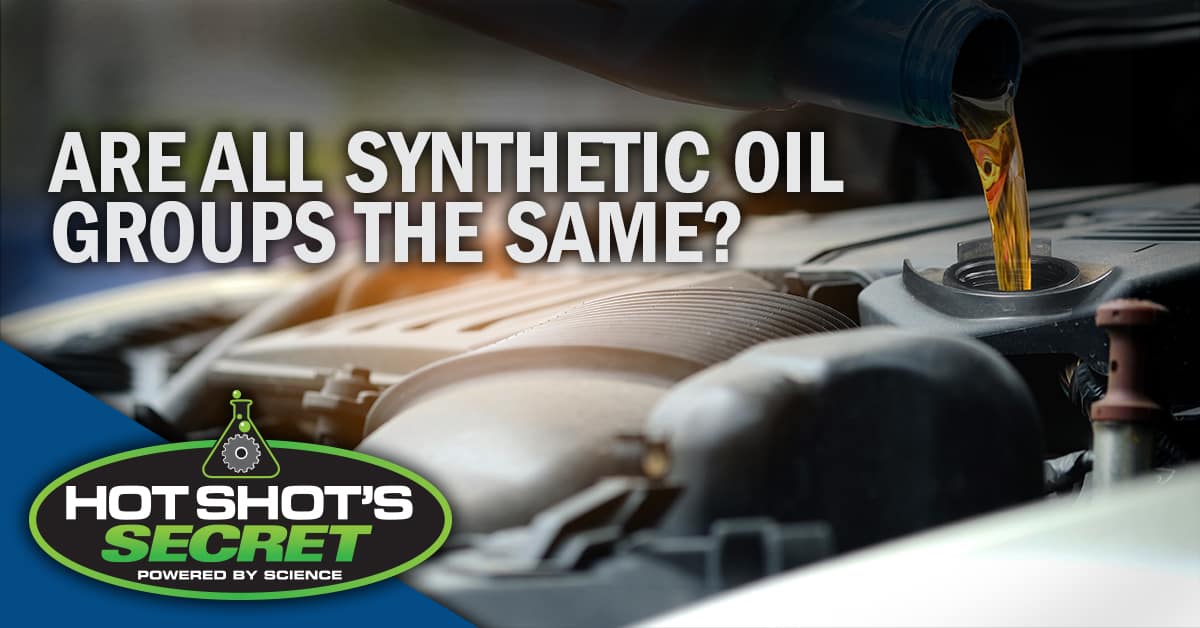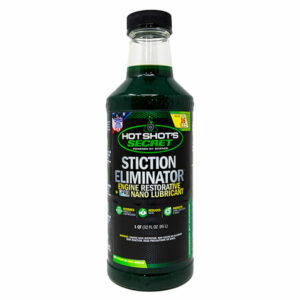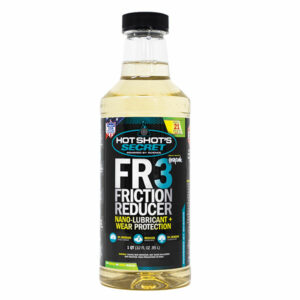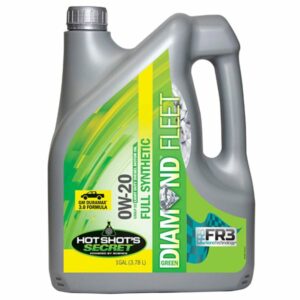
When you look across the shelf at all of the different types of motor oils, it can be a little overwhelming trying to understand the differences from one to another. And believe it or not, there are actually many differences between them. However, all motor oils start out as one of five different types of base oils as defined by the American Petroleum Institute (API).
The big differences come into play after motor oil manufacturers take the base oils, add different combinations of additives to them, slap a label on them, and put them on the shelf. So, what exactly is a base oil, or even the difference in the five basic groups of base oils? After all, that is what really separates an entry-level motor oil from a quality motor oil.
What Is a Base Oil?
A base oil is the building block for all oils on the market. Think of it as the primary ingredient manufacturers have to work with. Engine oils and high-performance gear oils all start with a base oil.
As with all things manufactured, the quality of the base oil influences the properties of the final lubricant produced. API relies on the characteristics of base oils to separate them into groups.
The Three Types of Base Oils
Before being categorized into the five main groups, base oils can be separated into three families — mineral, synthetic and bio-based. The family into which the oil will fall depends on its feedstock.
Mineral Oils
Mineral oils are the most common and widely used base oil type and result from the separation of crude oil. When crude oil is extracted from the ground, it is actually a mixture of multiple organic molecules. The molecules in crude oil differ in shape and size, giving it highly unreliable properties.
To make the oil more functional, the molecules are distilled into separate families like paraffinics, aromatics and naphthenics. Since they are earth-extracted, mineral-based oils are the most affordable type of base oil.
Synthetic Oils
Synthetic base oils are formulated in a lab. Manufacturers create an entirely new formulation of oil that has very specific characteristics, like increased antioxidant and detergent properties. These enhanced qualities make synthetic oils ideal candidates to support machinery with demanding applications. However, these products are a relatively expensive option.
When a manufacturer engineers an oil from scratch, it is a full-synthetic oil. These pure formulas are robust oils with impeccable performance capabilities. If they use a mineral oil as a starting point, manufacturers can create a synthetic blend.
Bio-Based Oils
Bio-based base oils refer to oils derived from a biological source. The most common in this category would be vegetable oils, which are derived from plants, but there are also animal-based oils and those extracted from trees.
Bio-based oils are an ideal option for manufacturers looking for a renewable and environmentally friendly base oil. Due to their highly mechanical extraction, bio-based oils are also more expensive.
Understanding How Types of Oil Are Categorized
The API categorizes oils according to several physical and chemical properties, including their degree of separation or manufacturing. The first three groups of oils are mainly mineral oils, and they are classified using factors like saturated compounds, sulfur content and viscosity index.
For example, an oil with lower hydrocarbon saturation, higher sulfur content and a low viscosity index will form part of the lower groups of oil. However, an oil with a higher saturation percentage, a lower sulfur concentration and a higher viscosity index will fall into a higher grade class.
The percentage of hydrocarbon saturation signals the oil’s chemical stability, while the sulfur concentration indicates the oil’s likelihood to contribute to acid formation. The viscosity index is evaluated to assess the oil’s resistance to temperature. The likelier the oil is to be affected by temperature, the lower its viscosity index.
The last two groups are made entirely of synthetic oils. These oils often have zero sulfur content, are highly saturated and have a high viscosity index.
The Five Base Oil Groups
The main oil groups, according to API’s categorization, are:
Group I
A group I base oil is the lowest quality of the five groups. Group I base oils typically have a viscosity ranging between 80 and 120. They are typically solvent refined and have an operating temperature as low as 32 degrees Fahrenheit and up to 150 degrees Fahrenheit. Because of the solvent refining process, there is typically a mixture of irregular hydrocarbon molecules resulting in a higher level of friction within the oil. Because of this, a group I base oil is primarily used in less demanding applications.
Group II
Similar to group I oils, a group II base oil’s viscosity also ranges between 80 and 120. The major difference is in the refining process, as a group II is manufactured by hydrocracking which breaks down the larger hydrocarbon molecules left in group I oils. Although group I and group II base oils are similar in price, a group II greatly out performs a group I making it much more common in the market today. This is what is used as the base in most conventional oils.
Group III
A group III base oil is typically used in synthetic oils. With a viscosity rated above 120, group III oils offer an even greater level of protection than groups I and II. Refined through a process known as severe hydrocracking, which uses greater heat and pressure, group III results in a much more pure base oil.
Our Green Diamond Full Synthetic oil is group III based. All our oils contain the patented FR3 Nano Technology to provide the absolute best level of protection to your diesel engine. Beyond the protective layer, the FR3 Nano Technology infusion provides longevity and performance gains that standard synthetic oils will not allow.
Group IV
Although there are differences between the first three groups of base oils, making the jump to a group IV is a far greater improvement than any of the others. A group IV base oil is also referred to as a PAO (Poly-alpha-olefin). With an extremely high viscosity index, great low temperature flow and top of the line oxidation stability, a group IV base oil is about as tough as it gets.
Our Blue Diamond line of oils is 100% group IV PAO-based. For extreme applications, they can withstand high temperatures and extreme shearing conditions. Blue Diamond can be run up to three times longer than the manufacturer’s recommended specifications. With the combined use of a Frantz Bypass Oil Filter, a scheduled oil analysis program, and Hot Shot’s Secret TBN Booster, your oil can last up to 100,000 miles.
Group V
While groups I-IV make up the majority of base oils, group V is more of a “catch-all” for all other types of base oils. Properties such as silicone, polyester, PAG (polyalkylene glycols) & biolubes are commonly found within group V. These group V base oils are typically mixed with other oils to achieve a desired end result, but are not among the most desired as a stand alone option.
Each one of these base oil groups have different qualities, and are intended for use in various applications. And just because a Group IV PAO is a superior quality oil compared to a group II, doesn’t mean it will always be the better option in certain applications. Each application is unique and it is important to always follow the manufacturer’s recommendation on which type of oil to use and when. However, it is always beneficial to understand the different groups of base oils when choosing the best oil for you.
Are All Synthetic Oils Groups the Same?
The short answer is no, all synthetic oil groups are not the same. When you think of synthetic oils, your mind may automatically shift to group III and IV oils. Both are synthetic oils, as group III oils are subjected to an intense hydrogen cleaning process, which creates new molecules and earns them a spot in the synthetic group. However, they are not equivalent to formulas from other oil groups.
Since groups IV are created for specific functions, they will often outperform group III oils. However, you may be able to achieve better performance by introducing a potent additive to the mix.
An additive can make a significant difference in the quality of oil. You could blend a group III oil with a strong additive to meet or outmatch a group IV oil. A good quality additive like our Stiction Eliminator can mean better performance, lower buildup and reduced wear.
Shop Quality Synthetic Oils
Oils are more complicated than we give them credit for. Each one of these base oil groups has different qualities and is intended for use in various applications. Just because a group IV PAO is a superior quality oil compared to a group II, doesn’t mean it will always be the better option in certain applications. Each application is unique, and it is important to always follow the manufacturer’s recommendation on which type of oil to use and when. However, it is always beneficial to understand the different groups of base oils when choosing the best oil for you.
Hot Shot’s Secret has a variety of engine oils and additives to choose from. Whether you’re looking to replenish additives or you’re in need of a total oil refresh, we’ve got you covered. Browse our five-star oil products today!




